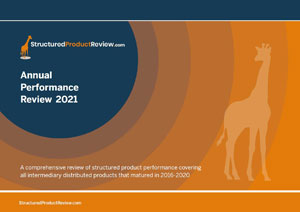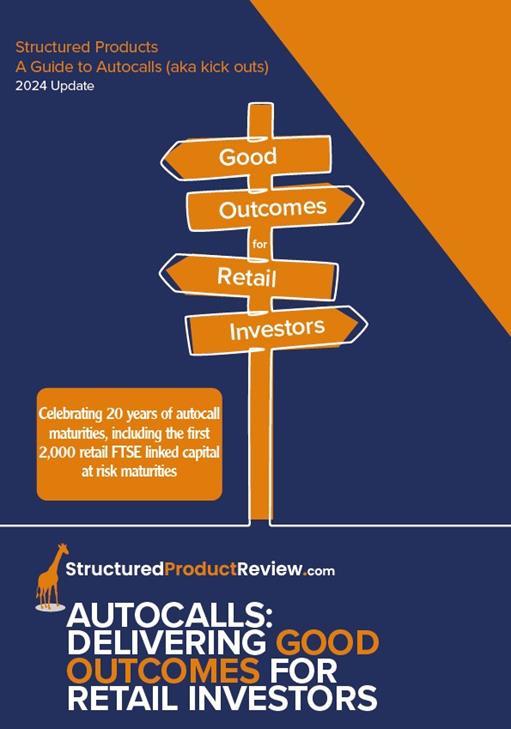14/09/2022
Though they have become few and far between in the sector over the previous decade, IDAD have recently released their latest capital ‘protected’ plan, which along with a steady increase in issuance of structured deposits, has duly prompted us to dispel an all-too-common misconception regarding the two plan types.
The key similarity, and potential cause of confusion, between deposit based and capital ‘protected’ plans is that they each protect investors’ capital from downside market risk. A typical capital-at-risk plan will protect investors original capital against a fall in the underlying index up to a certain point – deposit based, and capital ‘protected’ plans will return the original capital in full regardless of the extent of the fall in the underlying.
However, there is a fundamental difference between these plans in relation to risk that shouldn’t be overlooked by investors – counterparty risk. In this instance counterparty risk refers to potential that the issuing financial institution might default on its contractual obligation.
The Financial Services Compensation Scheme (FSCS) provides a layer of protection for depositors, protecting up to £85,000 per bank, per individual. This protection extends to include structured deposits which, to an extent, provide investors with protection against the counterparty bank failing.
A capital protected plan is not however a deposit but simply an unsecured note issued by the counterparty where the terms oblige the issuer to return the investment in full at maturity. As such, the risk of default is an inherent risk for which a potential reward is being paid and if that risk manifests into a loss because of default, it is not a loss that would qualify for FSCS cover. As such, despite their name, capital ‘protected’ plans do not provide protection in the event of an issuing counterparty defaulting, under which circumstance the return of capital would be subject to insolvency proceedings.
|
|
Downside Market Risk |
Counterparty Risk |
Typical Taxation |
|
Capital-at-Risk |
Yes |
Yes |
CGT |
|
Capital ‘Protected’ |
No |
Yes |
Income Tax |
|
Structured Deposits |
No |
No* |
Income Tax |
* Subject to FSCS compensation limits
Following the risk return trade off, investors should expect to be better rewarded the more risk they take and as such, a capital ‘protected’ plan should offer some enhanced return compared to an otherwise equivalent deposit-based plan.
Full details of all plans currently available, including several structured deposits that are Lowes ‘Preferred’, can be found here.
Also in this section
- How old is too old? Are structured products to die for?
- Product focus - October 2024
- Q3 2024 Issuance
- Q3 2024 maturity results
- A share of spread bets on steroids?
- Product focus - September 2024
- Maturities of the month - August 2024
- Right on time
- Product focus - August 2024
- Keep calm and zoom out
- 2,000 and counting
- Q2 2024 maturity results
- 20 years of autocall maturities
- Product focus - June 2024
- Fixed income or interest?
- Maturities of the month - May 2024
- The barrier debate - revisited
- Product focus - April 2024
- Maturities of the month - April 2024
- Time to call
- I don't believe markets are ever too high for Structured products!
- Notes on counterparty exposure
- Return of Nikkei
- Q1 2024 issuance
- Q1 2024 maturity results
- Structured Products – AAAAAGH!
- Hop in CIBC
- Re-enter Santander
- How to build a financial fortune - revisited
- Issuance in 2023
- Where's the risk?
- Questionable offerings
- Challenging the case against structured products - 'Loss of dividends'
- Navigating the investment landscape
- Challenging the case against structured products - Counterparty risk
- 6-year autocalls approaching final destination
- 1,750 FTSE capital at risk autocall maturities
- The leopard that changed her spots
- Q3 2023
- Challenging the case against structured products - Keydata
- Dilemmas for UK IFA's and the unique role of Structured Products
- 'High charges'
- Precipice bonds
- Intro
- FTSE 100 Contingent Income
- Indexing the indices
- Something different
- Investing through volatility
- 100 10:10s
- The best or worst?
- The 10%/25% 'Rule' that never was
- Structured products and the yield curve
- Fixed income: Capital at risk?
- Prospects for UK inflation - and fun with A.I!
- The Barrier Debate
- More Deposits for now
- Last of the Americans
- What if?
- Time heals all wounds, we hope...
- How to diversify portfolios using structured products?
- The Proof Is In The Pudding...
- Debunking Structured Misconceptions
- 1,500 FTSE Capital-at-Risk Autocall Maturities
- Q3 2022 Maturity Results
- What do we prefer?
- Deposits vs Capital ‘Protected’
- There’s time yet…
- Where did you invest your clients?
- A Six-Month Reflection
- Return of the Rev Con
- Happy 2nd Birthday FTSE CSDI
- Q2 2022 Maturity Results
- The best and worst yet still the best
- Critique my Suitability - Mariana 10:10 Plan June 2022 (Option 2)
- 10/10 for 55 10:10’s
- Q1 2022 Maturity Results
- 'How to build a financial fortune': a follow up
- Critique my Suitability - Mariana 10:10 Plan April 2022 (Option 2)
- 2021 Capital-at-Risk Autocall Maturity Review
- An unwelcome return...
- CSDI's First Birthday
- Bon Anniversaire
- Introducing the FTSE Custom 100 Synthetic 3.5% Fixed Dividend Index
- Q3 2021 Maturity Results
- Critique my Suitability - Mariana 10:10 Plan October 2021 (Option 2)
- Blurring the lines...
- Beware of false knowledge; it is more dangerous than ignorance
- Good news, bad news...
- Certainty is Certainly a Benefit
- Critique my Suitability - Mariana 10:10 Plan September 2021 (Option 2)
- A Twenty-Year Progression
- Q2 2021 Maturity Results
- Nine 8:8s Post Positive Returns in Falling Markets
- Critique my Suitability
- Q1 2021 Maturity Results
- Morgan Stanley’s Marvelous Maturity Medley
Current Products
We review the UK's retail structured investment sector, providing pertinent support for Professional Advisers and relevant research tools.
View all ⟶


